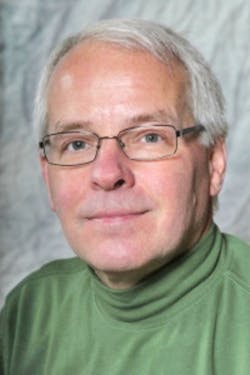AM signals: M2M satellites, smart-card capacitors, high-k material
SpaceX launched 11 ORBCOMM OG2 satellites into orbit yesterday and successfully returned the Falcon 9 stage one booster to a vertical landing on earth. “Today marks a significant milestone for our company. We’d like to thank our vendors and partners for their cooperation in this effort,” said Marc Eisenberg, ORBCOMM’s chief executive officer. “I’d also like to commend the ORBCOMM team for their hard work and dedication in making our second OG2 mission a success. Lastly, I’d like to congratulate SpaceX on making history by landing the Falcon 9’s reusable stage one booster from a record altitude. It’s an exciting day for all of us in the space industry.” ORBCOMM describes OG2 as “the world’s first and only commercial satellite network 100% dedicated to M2M.”
Three years ago, physicists from the University of Luxembourg had theoretically predicted unusual characteristics of a particular composite material. Their calculations have now been confirmed by an experiment in cooperation with the Centre de Recherche Paul Pascal in Bordeaux, France. The experiment resulted in the discovery of a so-called high-k-material, which might enable the production of better energy-storage devices. “Materials with a high dielectric constant, so-called high-k-materials, are highly sought after,” said Tanja Schilling, head of the research project at the Faculty of Science, Technology and Communication of the University of Luxembourg. “The discovery based on our predictions was now published in the renowned journal Nature Communications—which we are very happy about.”
Apple has criticized a British proposal to give law-enforcement officials more power to monitor communications, according to the Wall Street Journal. Apple said the bill would threaten “the personal data of millions of law-abiding citizens.” The U.K. government wants “permanent interception capabilities” for communications, including “the ability to remove any encryption.”
The French firm IPDiA has announced a range of low-profile capacitors. “The capacitors are just 100 µm thick, and despite their small size they have ESD performance up to 8 kV,” writes Richard Wilson at Electronics Weekly. “The devices are likely to be used in contactless smart cards for antenna matching, RF filtering and decoupling of active dies.”
About the Author

Rick Nelson
Contributing Editor
Rick is currently Contributing Technical Editor. He was Executive Editor for EE in 2011-2018. Previously he served on several publications, including EDN and Vision Systems Design, and has received awards for signed editorials from the American Society of Business Publication Editors. He began as a design engineer at General Electric and Litton Industries and earned a BSEE degree from Penn State.
